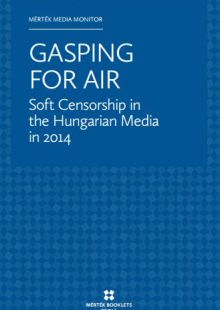Press freedom in Europe is facing a widespread and growing threat by “soft” censorship that includes governments’ use of financial power to pressure news media, punish critical reporting and reward favourable coverage. While Europe’s press is not generally threatened by the jailing of journalists or the closure of media outlets, “soft” censorship is a more subtle but a significant new danger - noted in 2014 the World Association of Newspapers and News Publishers (WAN-IFRA) when a report on soft censorship practices in the Hungarian media was released.
The report produced by Mertek Media Monitor in collaboration with WAN-IFRA and CIMA (Center for International Media Assistance) concluded that state influence over Hungarian media is unfolding “slowly but surely” and has accelerated under the current government. Among the most important key findings, the report mentioned that the allocation of state advertising spending is opaque and unfair; it is based on the political leanings of particular media outlets, and this distorts market competition significantly. The state’s biased advertising spending influences editorial pol- icies in an indirect way, creating a newsroom atmosphere in which editors accept and journalists practice self-censorship. Market competition among media agencies is clearly distorted by the bi- ased award of state contracts. The report detailed that the legal regulations and financial practices of Hungary’s current public media financing permit improper state influence over public media and fail to comply with European Commission requirements regarding state support for public-service media.
This new report produced by Mertek Media Monitor thanks to the generous funding of Fritt Ord and Open Society Foundations, aims to track the changes which occurred during 2014, highlight the main new trends and analyse their effects on the press freedom situation of the country.
In the first part of the report, the key findings and the methodology (Chapter One) are introduced, then the different chapters detail the events of the year from various aspects. Chapter Two deals with the trends on the media market and how these effect competition. Chapter Three summarizes the in-depth interviews the researchers conducted with journalists, and media experts. Chapter Four showcases how state advertising is used to reward loyal media, Chapter Five demonstrates how the licensing practices of the Media Council reshape complete segments of the media market, and the final Chapter Six shows a unique transformation of the Hungarian public media into a state broadcaster.
Full English report is available
here.


